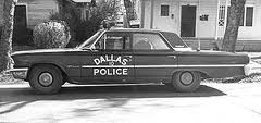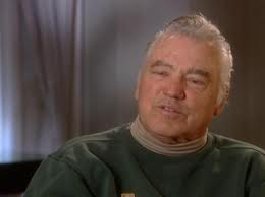Dog barking is distinct from wolf barking. Wolf barks represent only 2.4% of all wolf vocalizations and are described as "rare" occurrences. According to Schassburger, wolves bark only in warning, defense, and protest. In contrast, dogs bark in a wide variety of social situations, with acoustic communication in dogs being described as hypertrophic. Additionally, while wolf barks tend to be brief and isolated, dog barking is often repetitive. Dogs have been known to bark for hours on end.
While a distinct reason for the difference is unknown, a strong hypothesis is that the vocal communication of dogs developed due to their domestication. As evidenced by the farm-fox experiment, the process of domestication alters a breed in more ways than just tameness. Domesticated breeds show vast physical differences from their wild counterparts, notably an evolution that suggests neoteny, or the retention of juvenile characteristics in adults. Adult dogs have, for example, large heads, floppy ears, and shortened snouts – all characteristics seen in wolf puppies. The behavior, too, of adult dogs shows puppy-like characteristics: dogs are submissive, they whine, and they frequently bark. The experiment illustrates how selecting for one trait (in this case, tameness) can create profound by-products, both physical and behavioral.
The frequency of barking in dogs in relation to wolves could also be the product of the very different social environment of dogs. Dogs live in extraordinarily close range with humans, in many societies kept solely as companion animals. From a very young age, humans tend to be one of a dog's primary social contacts. This captive environment presents very different stimuli than would be found by wolves in the wild. While wolves have vast territories, dogs do not. The boundaries of a captive dog's territory will be visited frequently by intruders, thus triggering the bark response as a warning. Additionally, dogs densely populate urban areas, allowing more opportunity to meet new dogs and be social. For example, it is possible that kenneled dogs may have increased barking due to a desire to facilitate social behavior. Dogs' close relationship with humans also renders dogs reliant on humans, even for basic needs. Barking is a way to attract attention, and the behavior is continued by the positive response exhibited by the owners (e.g., if a dog barks to get food and the owner feeds it, the dog is being conditioned to continue said behavior).
Barking in domestic dogs is a controversial topic. While barking is suggested to be "non-communicative," data suggests that it may well be a means of expression that became increasingly sophisticated during domestication. Due to the lack of consensus over whether or not dogs actually communicate using their barks, not much work has been done on categorizing the different types of barking in dogs.
If you want to read a lot more about dog barking, go here:
This creamy casserole is the perfect thing to bake-up when you and the gang are hanging out. Place our California Casserole on the table with some crusty bread, cut up chicken breasts, and fresh veggies. Everyone will be gathered around this tasty dish to eat and converse. We know it'll be a great time!
- 2 (14-ounce) cans artichoke hearts, drained, quartered
- 2 (9-ounce) packages frozen chopped spinach, thawed and squeezed
- 2 (8-ounce) packages cream cheese, softened
- 3/4 cup milk
- 5 tablespoons butter, softened
- 1/2 teaspoon garlic powder
- 1/2 teaspoon ground nutmeg
- 1/4 teaspoon black pepper
- 1/4 cup grated Parmesan cheese
- Preheat oven to 350º. Coat a 9- x 13-inch baking dish with cooking spray.
- Place artichoke hearts in bottom of baking dish. Place spinach over artichokes.
- In a large bowl, combine cream cheese, milk, butter, garlic powder, nutmeg, and pepper; dollop mixture over spinach, then spread carefully with a knife. Sprinkle Parmesan cheese on top.
- Bake 35 to 40 minutes, or until heated through.
***If you need to save time, prepare this dish a day ahead, cover, and refrigerate. Before you're ready to serve, bake casserole in a preheated oven and serve hot.


The Air Force Birthday on September 18th commemorates the establishment of The United States Air Force.
Almost from the moment the Wright brothers found a way to soar with the birds, the military incorporated aeronautical pursuits into their missions. However, the Air Force did not become a separate branch of the Armed Forces until September 18, 1947.
The military established the Signal Corps as the first aeronautical force in the United States. During the Civil War, the first missions provided visional communications via flags and torchlight from aerial balloons. Even so, the Signal Corps didn’t become an official branch of the Army until 1863. Its creation made way for more aeronautical training and study.
Since then, military air service has gone through many names and commands. A few examples are the Air Service of the US Army, the Air Corps, and the Army Air Force. Finally, in 1947, President Truman signed the National Security Act establishing the United States Air Force as a separate branch of the military.
As a result of pursuing advanced technology and superior airmen, the US Air Force emerged as the swiftest tactical force ready to deploy anywhere at a moment’s notice. On September 18, celebrate the airmen and women who are on watch every day.
AIR FORCE BIRTHDAY HISTORY
The 1947 National Security Act restructured The United States military and intelligence agencies in the aftermath of World War II. On September 18, 1947, President Truman signed the National Security Act establishing the U.S. Airforce on board the first Air Force One, a VC 54C.
Air Force FAQ
Q. Does the U.S. Airforce have a reserves component?
A. Yes. In fact, the U.S. Airforce has both Air Force Reserves and Air National Guard components.
Q. How many Air Force bases are in the United States?
A. Currently, there are 59 active Air Force bases in the United States.



















1 comment:
The casserole looks tempting.
My father-in-law was Air Force during the Korean War but he was so thin they were afraid he would blow away, so he was stationed in England instead.
Happy weekend, Lydia
Post a Comment